Tamiya Cement vs. Airbrush Cleaner
Modeling tools and supplies are something that I covet. I’m always looking for something that will help me build faster, cheaper, or with greater quality. I know I have more tools than I need, but it never stops me from exploring new items or new ways of using them. As you may know about me, I have a YouTube addiction when it comes to scale modeling, so why it took so long for this video/tip to land in my video list is perplexing. Nonetheless, I was skeptical when I read the title, but quickly became a believer after YouTube immediately fed me several more videos to corroborate the story. So what is this tip?
Tamiya Thin Cement and Tamiya Airbrush Cleaner are the same thing! Although I’ve never purchased the airbrush cleaner (I’m a lazy cleaner and usually stick with IPA or lacquer thinner), I was in disbelief when I learned this. It seems unfathomable that pouring liquid cement into an airbrush would be a good thing, but alas, it’s fine!
Why does this matter? The Airbrush Cleaner is much more economical by volume. As of the posting of this article, a 40ml jar of Extra Thin goes for $6.00 and a 250ml bottle of Airbrush Cleaner is $10.50 (source: Sprue Brothers. No affiliation or advertisement, only using a site we’ve all heard of). Quick math: that makes the cement 350% more expensive by volume!
Don’t believe me? Watch the first video (and/or do your own research)! And if you want to get super nerdy on what all of our cements are made of, watch the second video (also corroborates the first). The bottom line is this: Extra Thin is a 50/50 mix of Acetone and Butyl Acetate; Airbrush Cleaner is 51% Acetone and 49% Butyl Acetate. Ok, so they aren’t EXACTLY the same, but that’s probably how the try to defend the cost differential.
If you really feel like saving money and want to make several years worth of cement, go to your local hardware store and buy your own ingredients (discussed in the 2nd video as well). Two gallons of Acetone and Ethyl Acetate (an acceptable substitute for Butyl Acetate) will set you back $66, which is the same cost as 11 Extra Thin jars, but you would have to spend $1,140 on Extra Thin to add up to two gallons. Whoa!
(NOTE: ASM isn’t actually encouraging mixing of solvents or other hazardous chemicals. Proceed at your own risk!)



